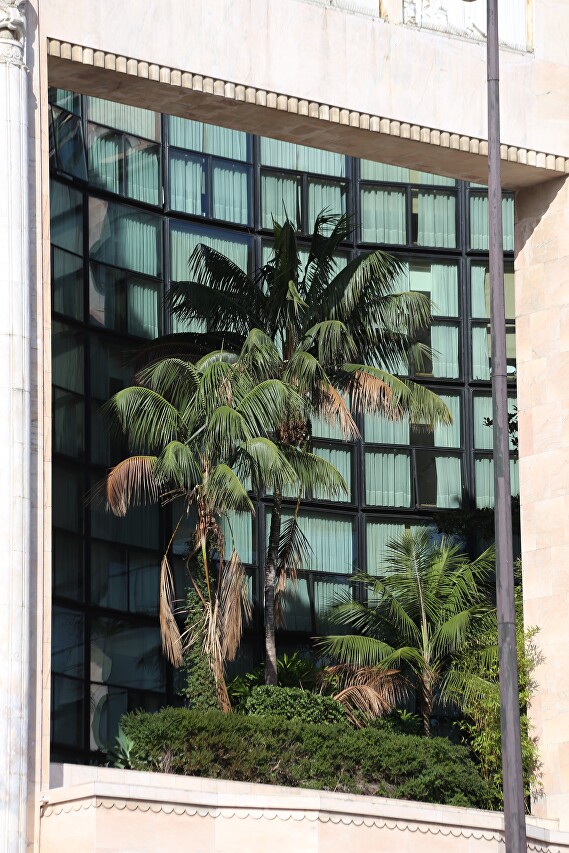Cineteatro Éden
In 1899, the company Empreza Industrial Portugal decided to establish the production of cars in Portugal, and the French engineer Albert Beauvalet was invited to lead the business. In 1902, Bouvale completed the development of a car of his own design and rented the old stables of the Palácio da Foz, located on the Restauradores Square, for its production. However, the lack of the necessary equipment and workers of the appropriate qualifications in Portugal forced the French car designer to abandon this idea. Instead, in 1906, he opened a showroom selling and servicing automobiles, becoming Portugal's first official Pegeut dealer. Sales were low, so in 1909 Bouvale moved the salon to the Avenida Palace Hotel, also located on the Square, and the Recreios Music Hall began performing in the stables building.
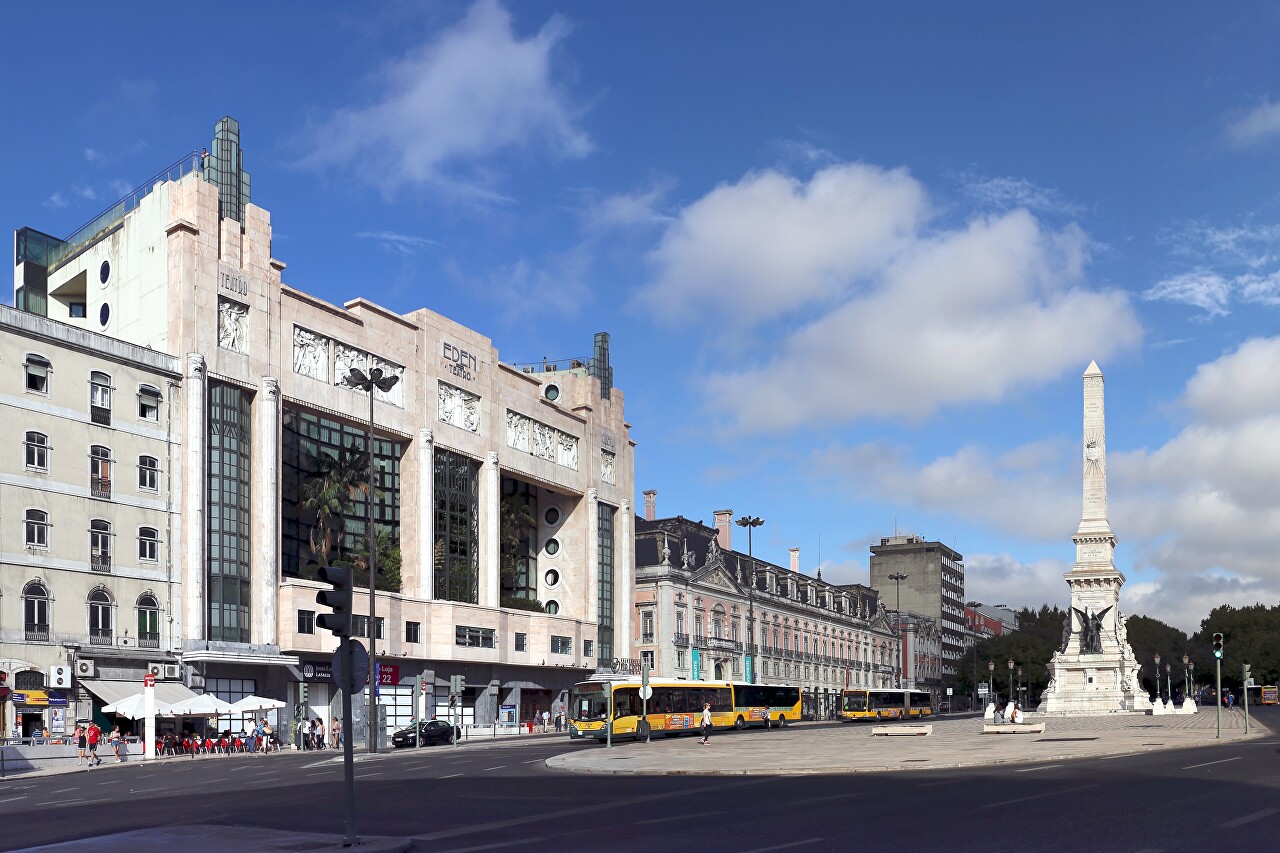
Seeing the success of the entertainment establishment in the heart of the city, the owner of the building, Count Jose Rodrigues de Sucena, decided to take matters into his own hands and rebuild the old stables into a large concert hall. On September 25, 1914, the Éden Teatro was opened for two thousand spectators, designed by architect Guilherme Edmundo Gomes. The building also opened For almost a decade and a half.The theater was the most important cultural venue in Lisbon, but in 1928 the State Inspectorate of Theaters recognized the structure of the building as unsafe and closed the hall. The owner was ordered to replace the wooden floors with concrete ones, expand the stairs and make evacuation exits in case of fire. To fix these problems, the owner invited the architect Cassiano Branco.
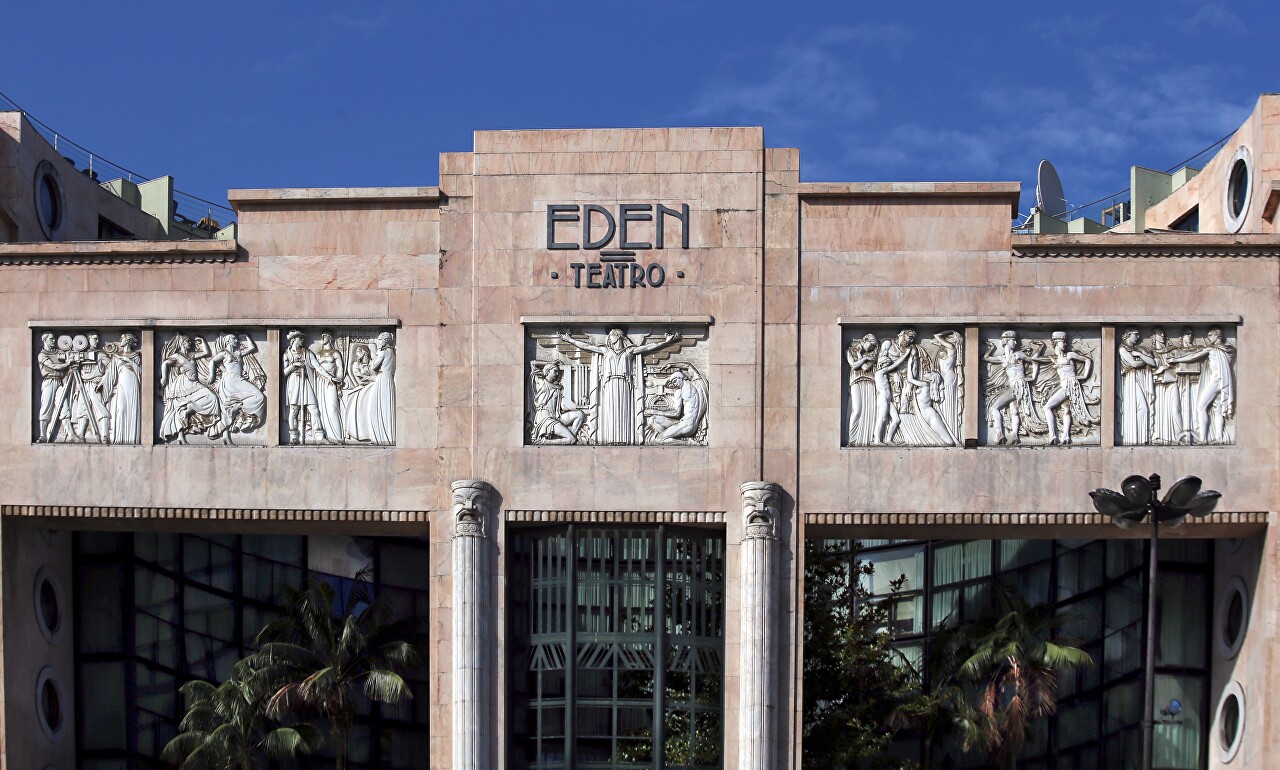
I must say that the former stables were a structure made of metal and glass from the era of the so-called "cast-iron architecture", which appeared in the middle of the nineteenth century. Therefore, Branko considered the reconstruction impractical, proposed to demolish the old building and build a completely new one in the popular Art Deco style in the 20-30s. The first point was completed in 1930, but the second point was delayed due to disagreements between the architect and the owner in their views on the architectural appearance of the building.
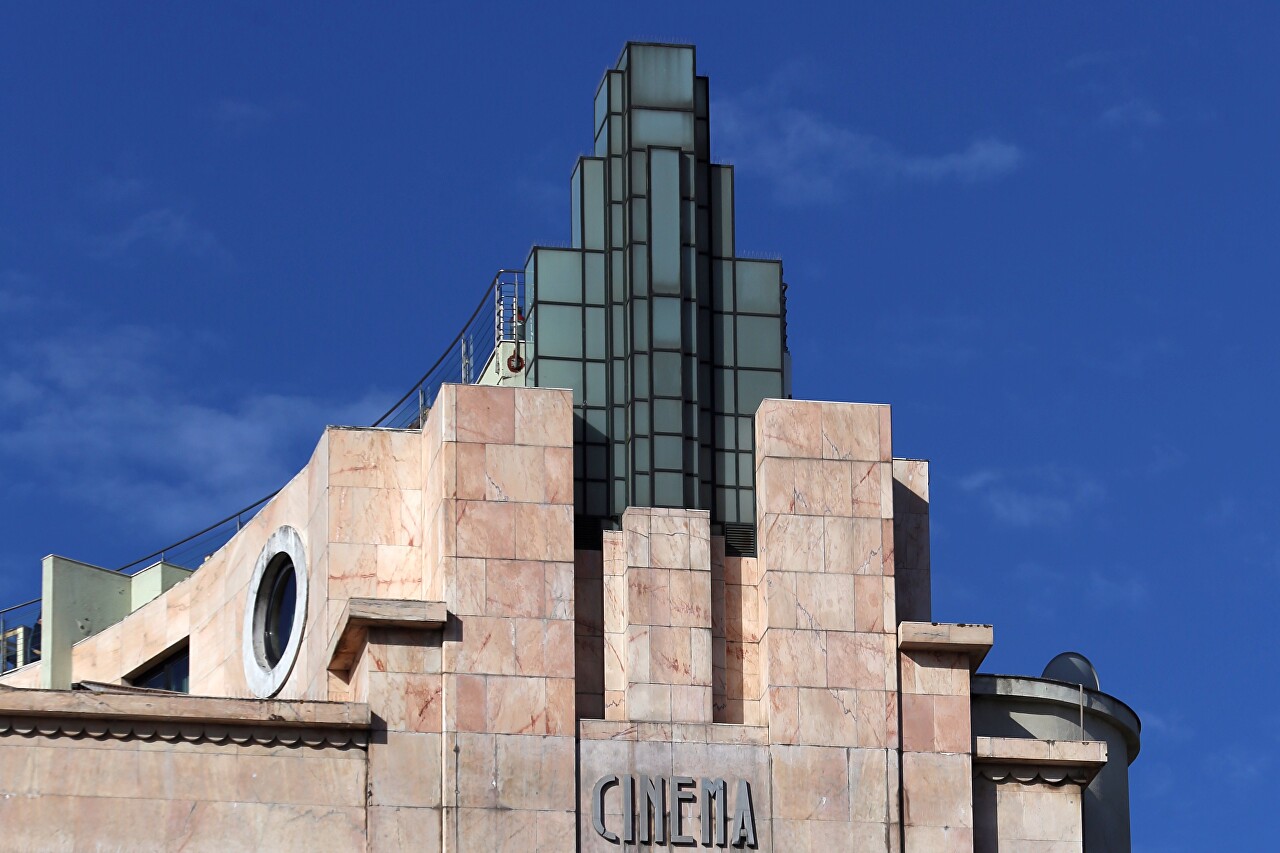
Branco had to submit several options, and only the third one went to the Lisbon City Council for approval in 1933. Having fulfilled the will of the customer and completed the project, the architect refused to participate in its implementation, so the construction was carried out under the direction of Carlos Florêncio Dias.
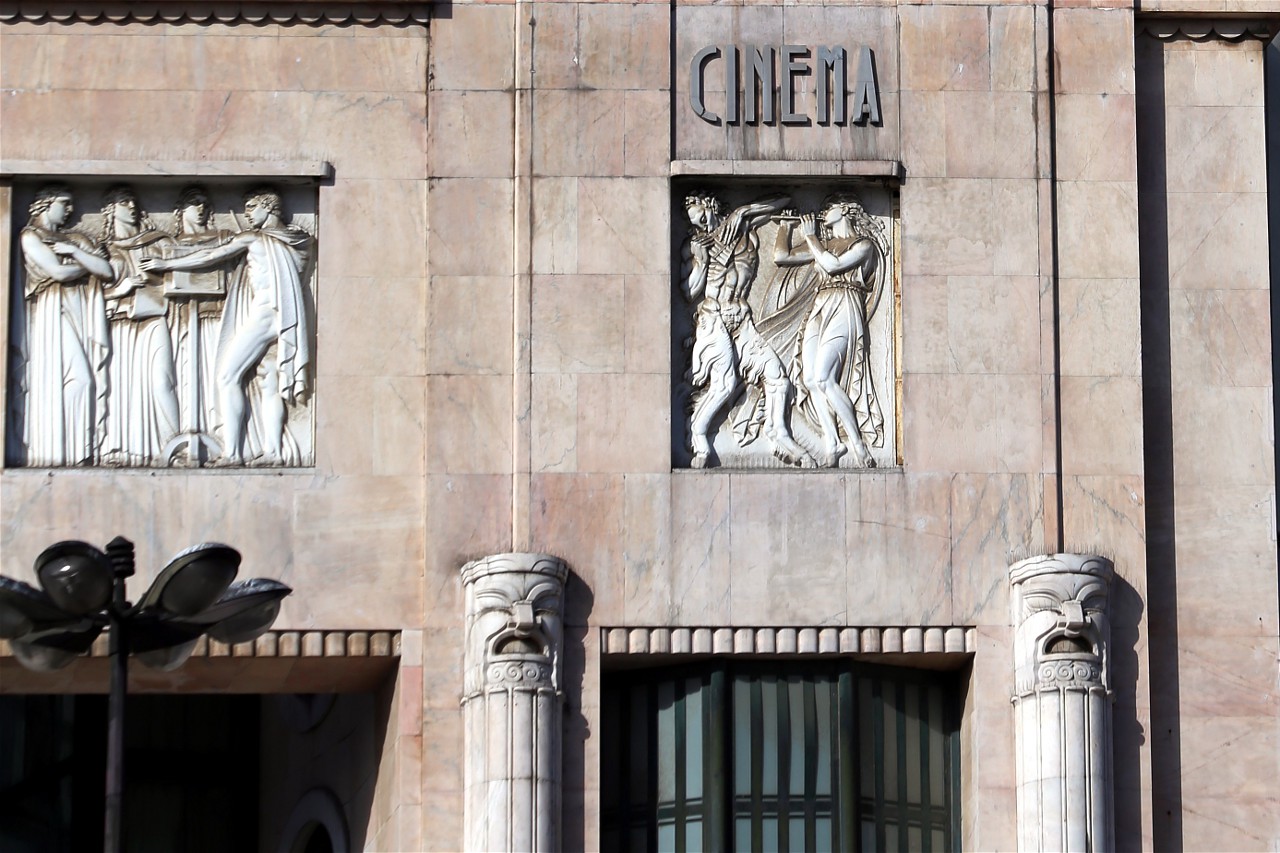
The pediment of the building is decorated with bas-reliefs, which were executed by the sculptor Leopoldo de Almeida in 1934. They fully correspond to the purpose of the building, they depict cinematic and theatrical scenes of various genres.
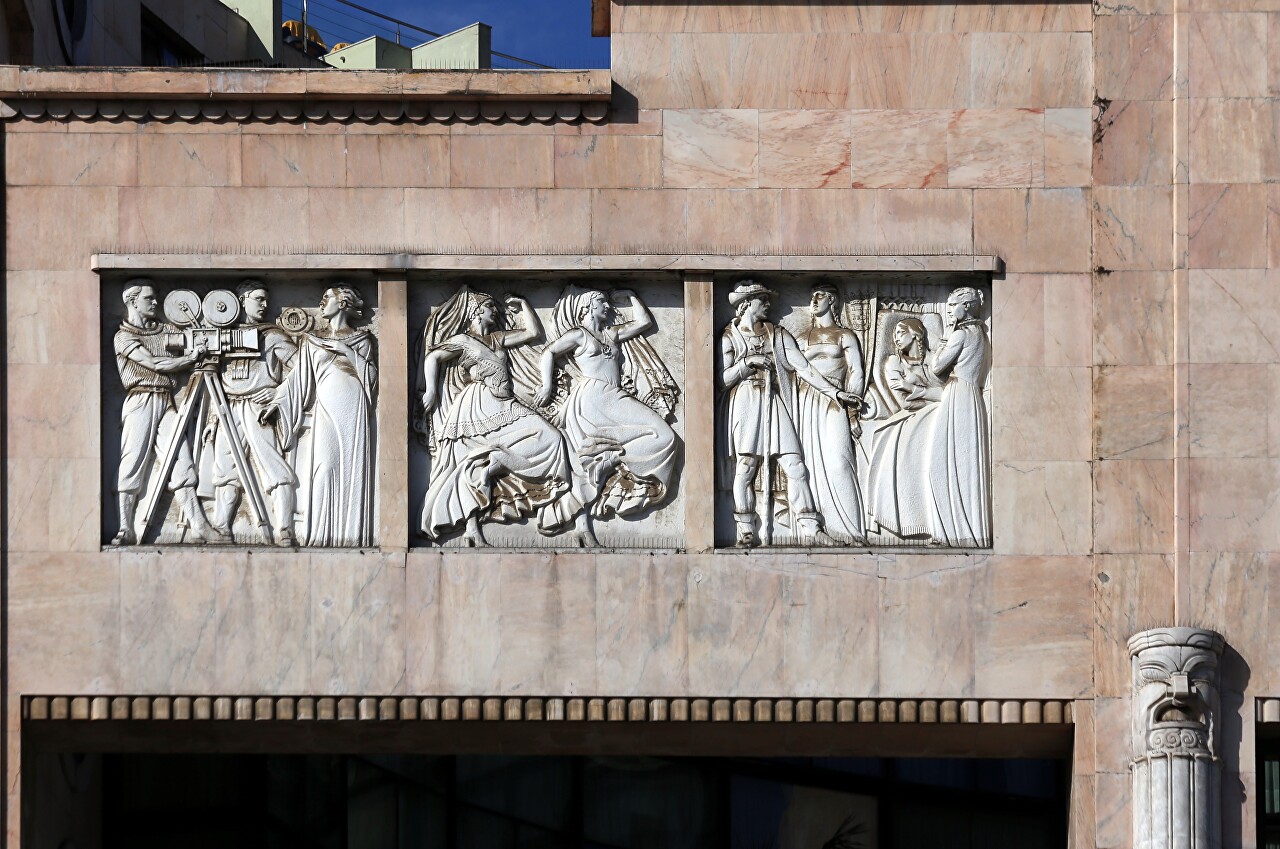
The grand opening of the Cineeatro Éden took place on April 1, 1937. The 1,440-seat cinema hall was the largest in Lisbon and ranked first in attendance in 1940. In the 50s and 60s, several more movie theaters opened in nearby neighborhoods, and Éden began to provide a hall for theater productions and concerts.
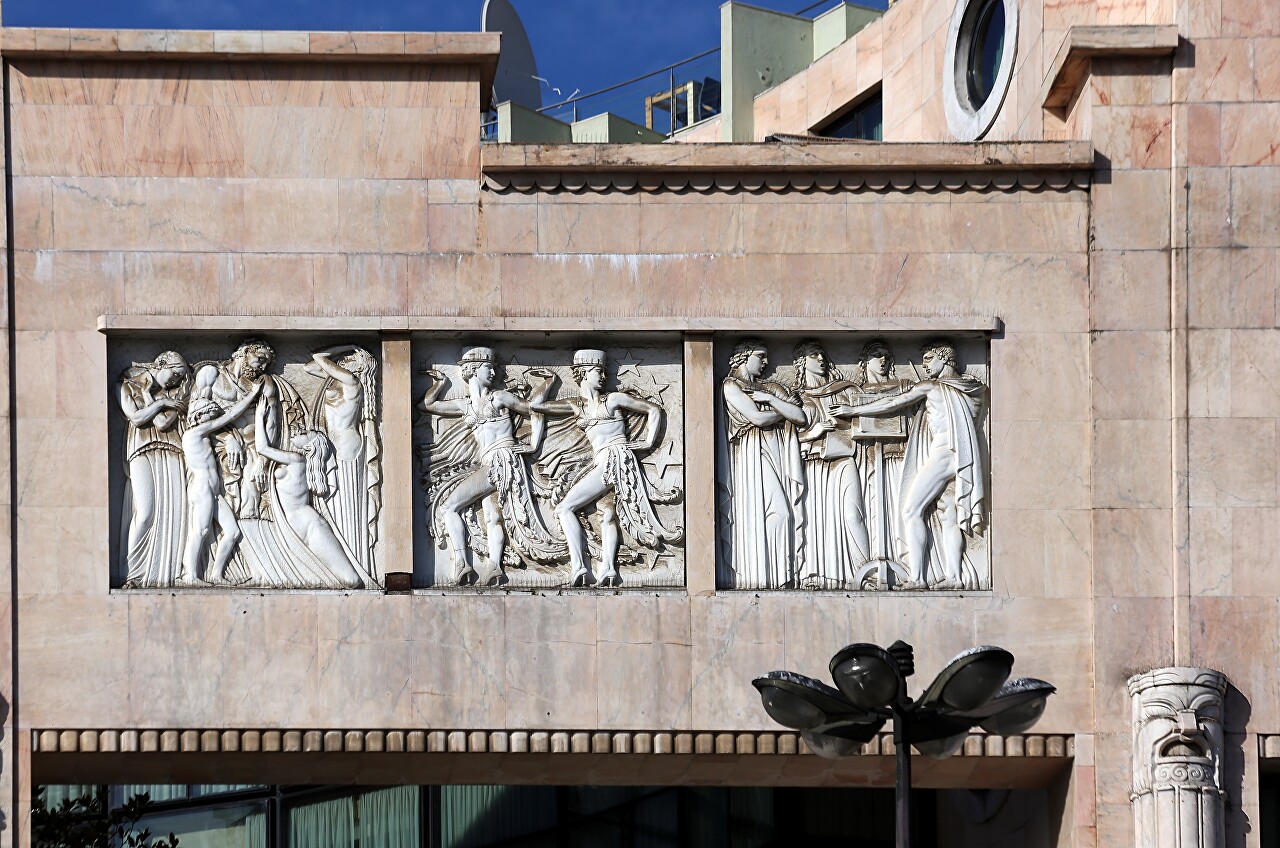
In the eighties, the neighborhood of Restaradorish Square became a center of nightlife with associated crime, respectable visitors were replaced by misfits and drug addicts, and the cinema began to fall into disrepair. In recent years, the repertoire has consisted of westerns and martial arts films. On January 31, 1989, Cineeatro Eden hosted the last film screening of Jamie Uys ' The Gods Must Go Mad II.
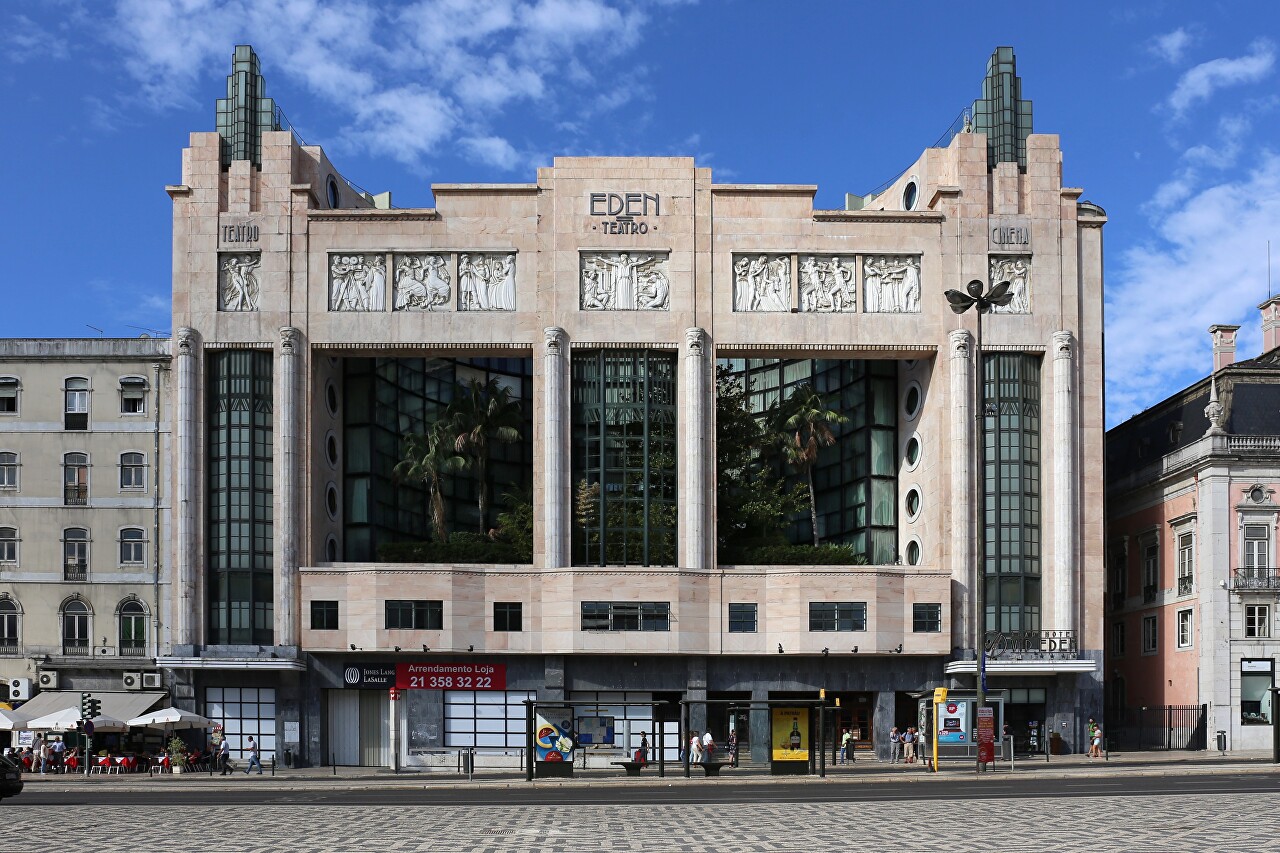
For many years the building was not used, in 1995 the interior space was rebuilt, the upper floors were occupied by a hotel, the lower floors were occupied by shopping areas. The facade has retained its external appearance, only the place where the main lobby of the auditorium was previously located has become a semicircular niche, forming a garden with palm trees and boxwood bushes. Currently, the building is occupied by Vip Executive Suites Eden Aparthotel 4*.
